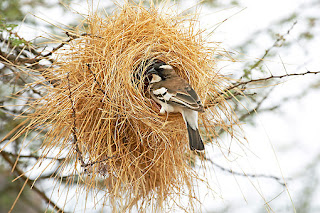AFRICAN RHINOS
There are two kinds of rhinoceros in Africa – the black rhino and the white rhino. There are approximately 4800 black rhino and 20 000 white rhino surviving in the wild.
Young white rhino..
A black rhino..
Black rhino
- Black rhino (which are actually grey) are browsers, using their pointed upper lips like a miniature elephant trunk to twist off low-growing branches of trees and shrubs.
- They are sometimes said to be bad-tempered, but are actually just shy and inquisitive. They will run towards anything unusual in their surroundings, but usually run away if they smell humans. Even so, if a black rhino is encountered in the wild, you should climb the nearest tree or stand very still. Some individual rhinos are very nervous and a female with a calf will charge anything she considers a potential threat.
- Rhinos have poor eyesight but a good sense of smell and hearing.
- Black rhino grow to 1.6m tall, weigh up to 1 400kg and have two horns.
- Black rhino are the fastest kind of rhino with a top speed of 55km/ hour.
- They eat woody trees, shrubs and herbs.
White rhino
- The white rhino has a wide mouth. The name of the white rhino is sometimes said to be a corruption of the Dutch word “wijd” but nobody really knows where the names come from.
- The white rhino grows to 1.8m and weighs over two tons. It is second only to the African elephant in the size of land mammals.
- It is a grazer and lives in social groups.
- They mainly eat grass and are the most abundant rhino species.
- They have two horns.
The story of the southern white rhino is one of the great conservation success stories of the 20th century. A hundred years ago they had been hunted almost to extinction. A small surviving population of about 50 was protected in Imfolozi Park in KwaZulu-Natal, South Africa. That population grew and the then Natal Parks Board (now Ezemvelo KZN Wildlife) began to translocate animals to other areas where they could breed to form new populations. They are no longer considered critically endangered, although are still regarded as vulnerable.How to distinguish between black and white rhino in the wild
Black rhino are more likely to be solitary and are shyer, keeping to thicker bushy areas. White rhino tend to be in groups. Black rhino have short necks and hooked lips which make browsing branches easier. White rhino have long necks and wide mouths for eating grass.AFRICAN RHINO ACTIVITIES AND BEHAVIOUR
- Black rhino adults tend to roam within specific areas, called home ranges or territories.
- Mother rhinos protect their calves fiercely.
- Rhino are host to many parasites. Black rhino carry a few tick species that are rhino specialists. Ticks are the cause of much of the determined rubbing on posts and stones undertaken by rhino.
- Black rhino must drink at least every two to three days. When succulent plants form a large part of their diet, they can go without drinking for longer.
- Black rhino do more of their feeding and drinking during the cool hours of the night than during the day.
- Social advertising is important to rhino. They make use of dung piles or middens and scrapes (spray-urination sites). The middens are used by more than one rhino and by both black and white rhino. Males use spray-urination to advertise their presence and mark their range.
- Rhino use their horns for self-defence and attacking opponents or predators. White rhino groups stand in a circle facing outwards to form a barricade with calves near the centre.
 Two white rhinos..
Two white rhinos.. A black rhino...
A black rhino...





















































